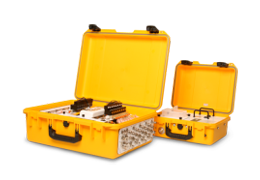The 8100-104 and 8100-104C Long-Term Chambers are used to make continuous measurements of soil gas flux at a single location for weeks or months at a time.
The chamber uses a motor-driven strut system to move the chamber bowl away from the soil collar. This ensures that the sample location is subjected to normal, undisturbed precipitation, temperature, and shading between measurements. It has a pressure vent at the top of the chamber to prevent pressure spikes when the chamber closes, and to maintain the chamber pressure at the ambient level under calm and windy conditions (Xu, et al., 2006).
Each chamber has two gaskets: the chamber bowl seals to the base plate with a flexible gasket, and the base plate seals to the soil collar with a second gasket.
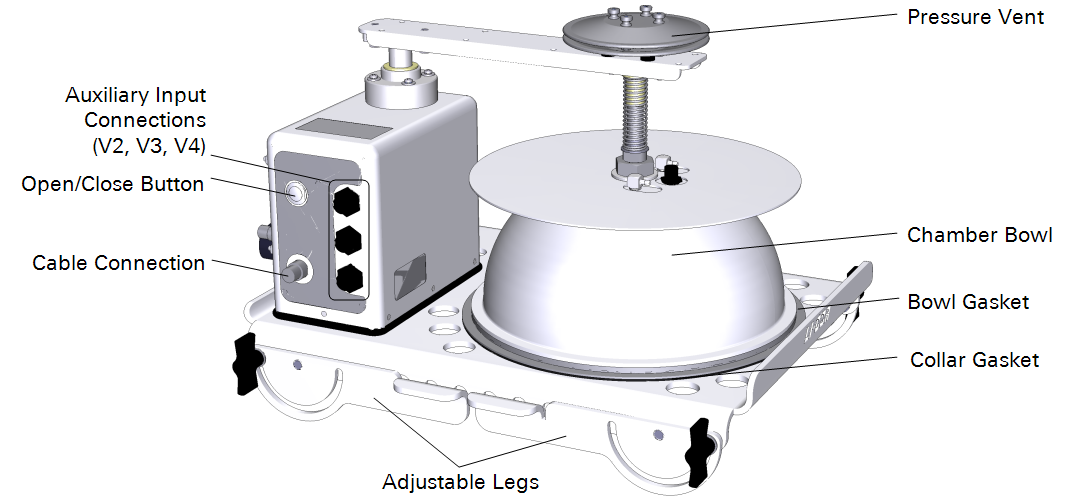
The 8100-104 and 8100-104C Long-Term Chambers are designed primarily for use with the LI-8150 Multiplexer, but they can be used for long-term single chamber measurements or as stand-alone devices with other analyzers.
NOTE: The 8100-104/C has three sensor inputs; sensors attached to these inputs can only be monitored when the chamber is connected to the multiplexer. If the 8100-104/C is used in single chamber mode with the LI-8100A, auxiliary sensors must be connected to the auxiliary sensor interface, not the chamber itself.
Connecting a long-term chamber
The long-term chambers use only two tubes: AIR OUT is to the chamber, AIR IN is returning from the chamber.
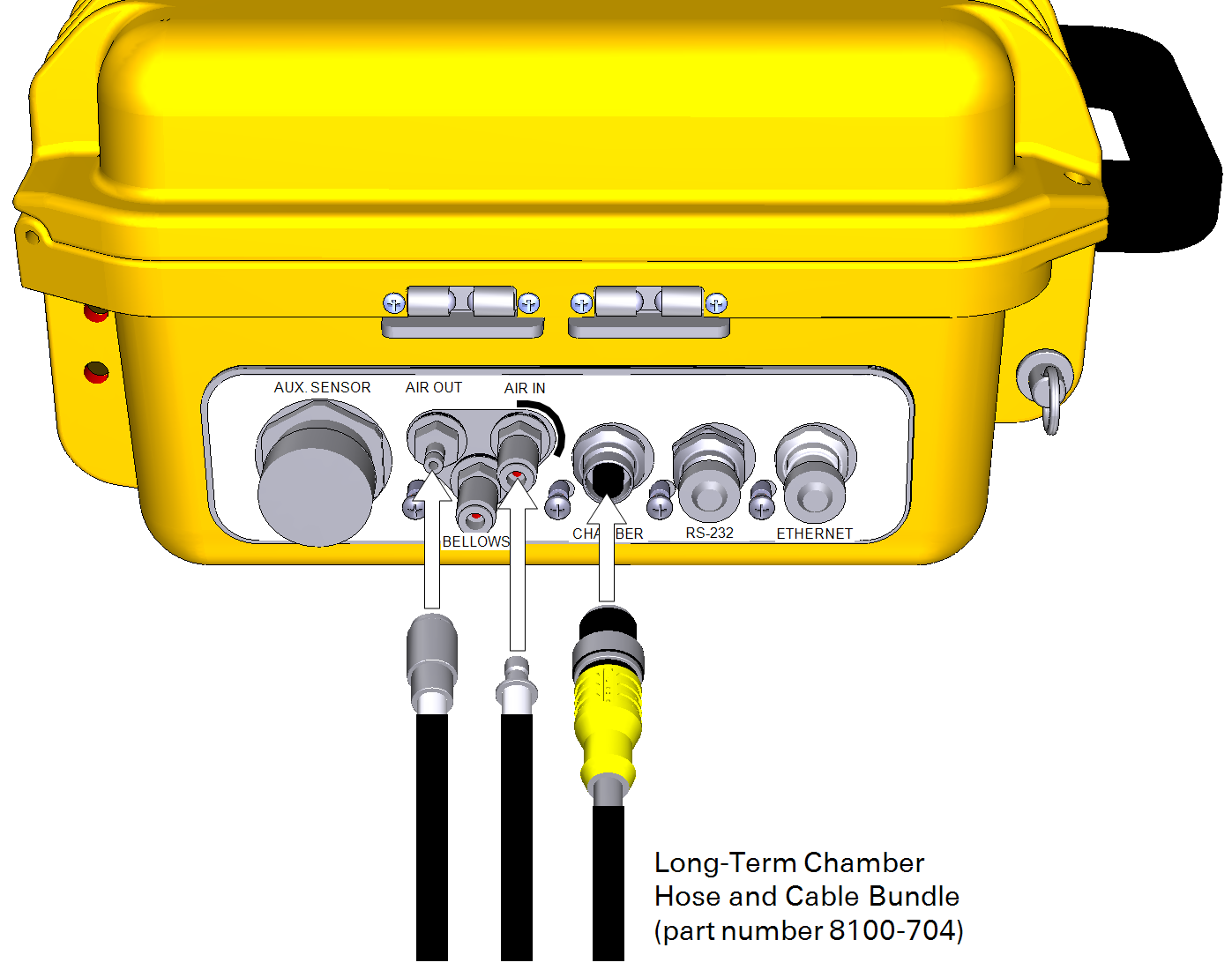
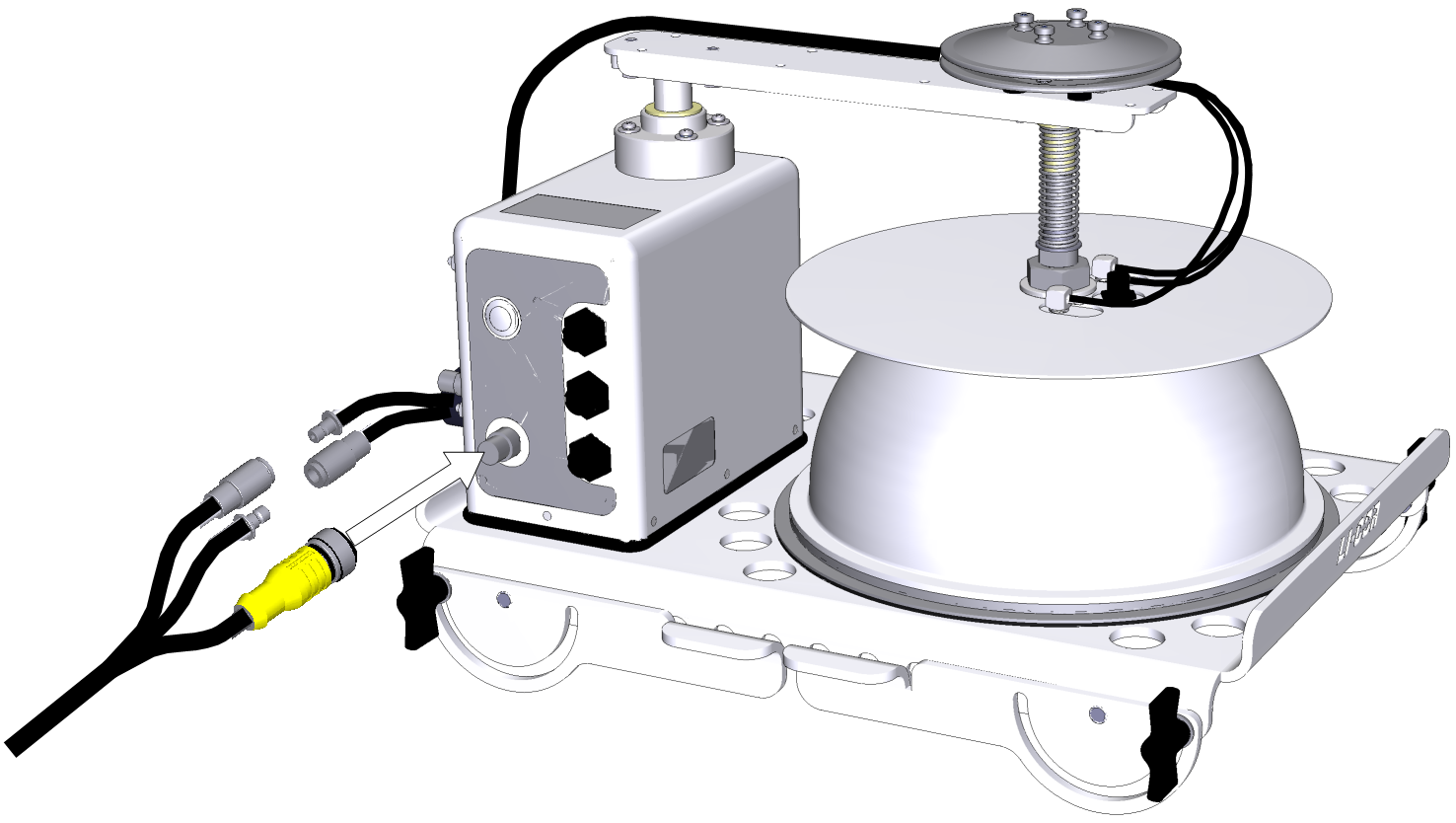
Notes on chamber connections:
- The cable fittings have fine threads. Make sure there is no debris on the fittings before attaching the connectors, as the threads can be easily damaged.
- Cover the connectors with the attached connector dust caps whenever the connectors are not being used.
- When using a long-term chamber, the bellows port on the LI-8100A should be plugged with part number 9981-118, found in the spare parts kit.
- If you swap between survey and long-term chambers connected to the analyzer control unit you must power the instrument off and then back on, as the type of chamber attached to the analyzer control unit is recognized during system startup.
Leveling the chamber
Each of the four legs should be adjusted so the chamber sits even over the soil collar. To adjust a leg, loosen the handle and reposition the leg. Then tighten the handle securely.
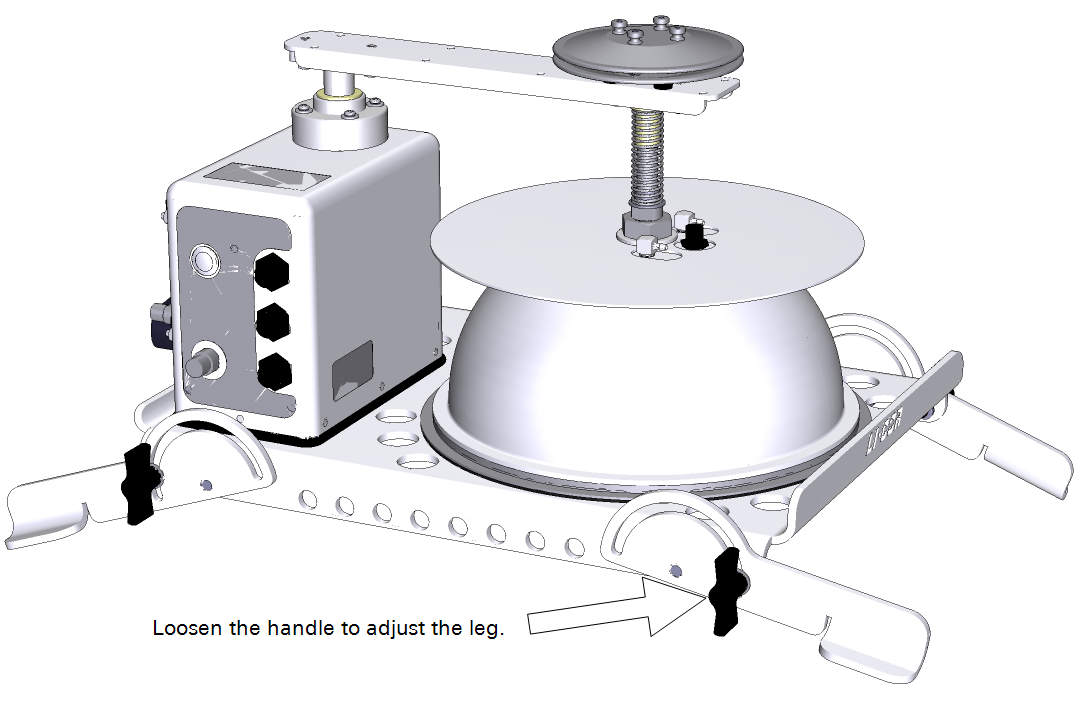
Changing the long-term chamber open position
The default open position is approximately 180° from the closed position, as shown in Figure 2‑14. You can choose from 5 other open positions to avoid terrain or obstructions that interfere with the full 180° of movement. To change the open position:
- Press and hold the Open/Close button for 5 seconds.
- Wait a few moments while the chamber positions itself.
- Press the Open/Close button one time to move the chamber to its first open position (#5 in the diagram below).
- Continue to press the button one time to move the chamber to each of the other five open positions.
- When the chamber is in the desired open position, hold the Open/Close button for 5 seconds again; the chamber will store the setting until it is reprogrammed.
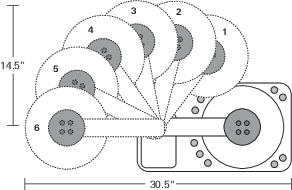
Press the Open/Close button twice in quick succession to park the chamber. When parked, the chamber will raise slightly to prevent compression of the chamber gasket.
CAUTION: Park the chamber before transporting it or placing it in long-term storage. Handling the chamber while it is not parked can strain and potentially damage the shaft and sealing mechanism.
